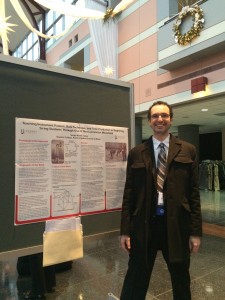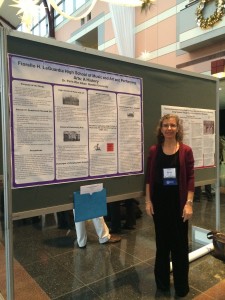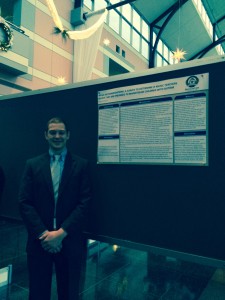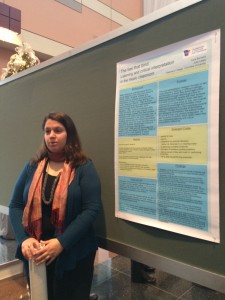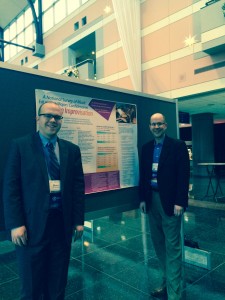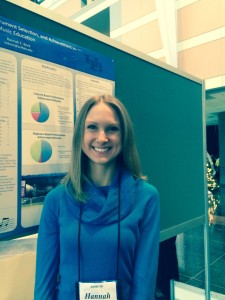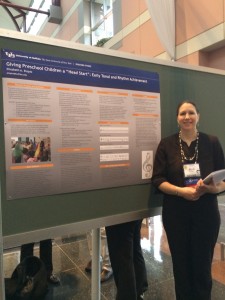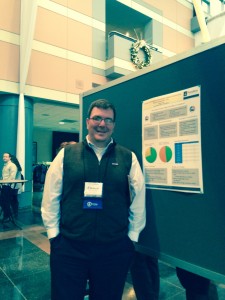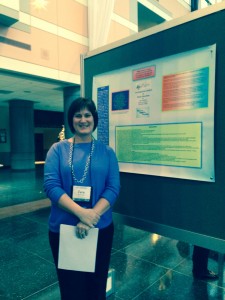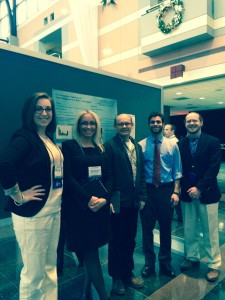Research Gallery Abstracts 2014
Teaching Instrument Posture, Bow Technique, and Tone Production to Beginning String Students Through Use of Non-Locomotor Movement
Sergio Acerb, Queens College
The purpose of this paper was to review and synthesize literature on the use of non-locomotor movement in teaching instrument posture, bow technique, and tone production to beginning string students. Locomotor movements involve shifts in spatial position of the entire body (e.g., running, jumping, sliding). In contrast, non-locomotor movements are those for which the lower body remains stationary while the upper body moves (e.g., swinging arms, bending, twisting).
This work addressed four research questions: (a) How does the string pedagogy literature address the use of non-locomotor movement? (b) What are the benefits to student achievement when using non-locomotor movement exercises for teaching strings? (c) How can non-locomotor movement exercises be used to develop engaging teaching approaches for beginning string students? (d) How can the gap between research and practice regarding the use of non-locomotor movement in string pedagogy be negotiated?
By means of an extensive review of the string pedagogy literature, applications and benefits of non-locomotor movements when teaching instrument posture, bow technique, and tone production to beginning string students were identified and synthesized. Terminology specific to this body of research, including “non-locomotor movement,” “poise,” “grounding,” and “opposition,” were clarify further clarified and discussed.
Eminent string pedagogues Rolland and Havas and several of their “pedagogical descendants” (e.g., Fischbach, Gillespie, Hamann, Lyne, Magers, McCullough, Perkins, Rowell, Sharp, and Young) thoroughly discuss and demonstrate applications and advantages of non-locomotor movement exercises in their string pedagogy materials. Analysis of these discussions and demonstrations suggested that non-locomotor movements in string pedagogy foster increased student motivation and achievement.
This research contributes to the field of music education with a comprehensive review and synthesis of books, book chapters, dissertations, journal articles, video recordings, and websites related to “best practice” teaching strategies for string classes. Through analysis of these works, the benefits of non-locomotor movement exercises were revealed. Recommendations for more effective integration of pedagogical research and practice in string teacher education are also provided.
Fiorello H. LaGuardia High School of Music and Art and Performing Arts: A History
Peris Alban, Independent Scholar,
Russell Sage Junior High School
The Fiorello H. LaGuardia High School of Music and Art and Performing Arts in New York City was formed through a merger of two existing arts high schools in 1961–the High School of Music and Art and School of Performing Arts. Although the High School of Music and Art’s history has been well documented, no studies have documented the histories of the School of Performing Arts and the Fiorello H. LaGuardia High School of Music and Art and Performing Arts. Therefore, this concise history of the development of the Fiorello H. LaGuardia High School of Music and Art and Performing Arts in New York City fills a gap in current historical literature.
Research questions focused on (1) the founding of the two independent performing arts high schools and their amalgamation into the Fiorello H. LaGuardia High School of Music and Art and Performing Arts; (2) key personnel and their role in facilitating the merger; (3) the shaping forces of the philosophies/missions/visions of the two independent high schools on the Fiorello H. LaGuardia High School of Music and Art and the Performing Arts; (4) how the music curriculum of the High School of Music and Art and School of Performing Arts helped shape the music curriculum of the Fiorello H. LaGuardia High School of Music and Art and Performing Arts, and (5) students’ musical activities throughout the school’s history.
Research methodologies included consulting primary and secondary sources and interviewing former and current administrators, students, alumni, friends, and other key personnel from each of the three schools.
This study has several implications for the music education field. Alumni and LaGuardia Arts HS students were grateful for an opportunity to attend a school dedicated to the arts, in particular–music. The students interviewed claimed that the schools saved their high school careers because they were allowed to express their creativity. These students’ stories suggest that educators, policy and political leaders who determine educational policies should consider music education as essential to any school curriculum.
Philosophy and mission statements are at the core of successful schools. When the HSMA and SPA were merged for convenience sake, core values were jeopardized even nullified–as was the case with the SPA. Their histories highlight the importance of a unified mission among administrators, policy makers, and faculty. In addition, music programs would benefit greatly from principals and/or other personnel within the schools’ administrative department who possess an understanding of the arts, but also value the arts education. Without value and understanding of music and the arts, there is potential for poor leadership in delivering high quality arts programs for students.
From the schools’ rich independent beginnings to their turbulent transitional years, where the amalgamation and relocation took nearly a quarter century to complete, the school remains a model for subsequent specialized arts high schools in the nation.
Music Accommodations: A Survey to Determine If Music Teachers Believe They Are Prepared to Mainstream Children with Autism
Noah Alessi, Houghton College
In 1978 Public Law 94-142 mandated “education for all” policies. This law stated that students with disabilities were entitled to have a free, appropriate public education. For many special education students, this resulted in their being mainstreamed into regular education classrooms. All educators, including music teachers, had to learn to meet the needs of these students alongside the general education students. Among the special education students mainstreamed were those diagnosed with autism. Perkins (1981) determined that music educators felt they were not prepared to teach students with autism. Frisque (1994) stated that teachers lacked confidence in their ability to teach these students due to ineffective training. Little information, however, had been gathered on the preparedness of music educators to teach students with autism.
One hundred twenty eight music teachers were surveyed to gather information about how well each felt he was prepared to teach students with autism. Survey questions included topics such as teacher inclusion in creating Individualized Education Plans and the modifications that teachers made to the curriculum in order to appropriately serve these students.
The findings revealed that the majority of teachers believed they had not been prepared to teach students with Autism and that they were not included in preparing IEPs for these students. Additionally, approximately twenty five percent of those surveyed did not alter their lesson plans to meet the specific needs of students with Autism.
Collegiate music education programs and school districts should take note of teachers’ insecurities and provide additional college courses or professional development trainings. Additional training will increase music teachers’ confidence and allow them to believe that they have been properly prepared to serve students with Autism.
The effect of piano playing on preservice teachers’ ability to detect errors
Jessica Napoles University of Utah
Sandra Babb, Queens College
Judy Bowers, Florida State University
Steven Hankle, Florida State University
Adam Zrust Florida State University
Choral teachers can often be found at the piano playing parts for their singers in rehearsal. This common practice is especially prevalent in classrooms where a full-time accompanist is not available or affordable. Presumably, teachers play the piano in order to help singers learn their parts, and to provide a correct aural referent.
The purpose of this study was to examine the effect of playing the piano while listening to choral excerpts on pre-service teachers’ error detection skills. Specifically, we wished to determine whether there would be a significant difference in errors detected under two conditions: (a) when playing a single vocal line (soprano or bass) on the piano while listening to excerpts, and (b) when listening to excerpts. A secondary purpose of this study was to determine whether participants’ ability to detect errors would be different when they were located in the soprano or bass lines.
In a within subjects design, participants (N = 55) listened to four excerpts of choral hymns (Were you There, Joyful, Joyful, All Glory, Laud, and Honor, and Come Thou Fount) or played a single part (soprano/bass) on the piano while listening to the excerpts. They were then asked to locate the errors that occurred in these excerpts. Each excerpt contained a pitch and a rhythm error, in the soprano and bass voice parts.
Results indicated a significant main effect for condition, F (1, 15) = 38.95, p < .001, partial η2= .72. There were more errors detected in the listening condition (M = 10.23, SD = 3.29) than in the playing condition (M = 6.61, SD = 2.81). Because piano playing during rehearsal seems to divide attention, teachers might try to avoid depending solely on the piano for melodic, harmonic and rhythmic support, especially during the initial stages of rehearsing new repertoire, when mistakes are likely to be made. Teacher training should include strategies for rehearsing new music that develops the pre-service teacher’s ability to teach the audiation and sight-singing skills necessary for choirs to be successful.
The ties that bind: Listening and critical interpretation in the music classroom
Cara Bernard, Teachers College, Columbia University
Judy Lewis, Teachers College, Columbia University
Music listening is a central activity for our young students in their daily lives (Allsup & Baxter, 2004). And yet, students’ abilities and opportunities to verbalize and share their impressions of music is sorely lacking in the music classroom (Reimer, 1994). Despite the fact that the National Music Standards (1994) and the current National Core Arts Standards (2014) hint at the importance of listening, connecting and responding in the music classroom, music educators tend to focus on performance-based skills at all age levels (Benedict, 2014; Benedict, 2004). As a result, the funds of knowledge (Moll, 1994) and skills that a large majority of our students already possess from their constant interaction with music in their everyday lives is not given expression in the music classroom.
Listening, connecting and responding may constitute potential entry points for developing democratic spaces in the music classroom. Creating opportunities for critical interpretation and dialogue about the music that they hear is central for students’ development of tools of critically thinking and metacognition (Pogonowski, 1989) and can encourage the creation of a “third space” (Guttierrex, 2008) in which students come together to share collective understandings and interests.
This action research focused on two music teachers, working in different settings, and the ways in which they encouraged critical interpretation as a tool for fostering democratic spaces with their students. Are there common threads in these teachers’ experiences? In what ways do they use musical repertoire to encourage and facilitate critical listening engagements in their individual musical settings? Through the process of storytelling and dialogical commentary, the authors looked for points of entry into shared pedagogies, as well as points of conflict, which reflect ways they may understand listening and critical interpretation differently.
A National Survey of Music Education Majors Confidence in Teaching Improvisation by Christian Bernhard, SUNY Fredonia
David Stringham James Madison University
Rebecca Longhenry, James Madison University
Educators and researchers advocate the use of improvisation in K-12 instrumental music education, suggesting it affords students unique means of representing aural and notational stimuli, aids in the comprehension and performance of diverse genres, and enables self-awareness and ensemble cohesion (e.g., Feldman & Contzius, 2011; Higgins & Campbell, 2010). The National Coalition for Core Arts Standards (2013) affirmed improvisation with their development of new music standards and The National Association of Schools of Music (2013) indicated that music students “must acquire a rudimentary capacity to create original or derivative music” (p. 99) through composition and improvisation.
The purpose of the current study was to investigate undergraduate music education majors’ confidence in teaching improvisation, according to the NAfME (1994) K-12 Achievement Standards. Specific research questions were: 1) How confident are music education majors in implementing the 11 improvisation achievement standards for grades K-12? 2) How confident are they in their own improvisation ability? 3) How interested or motivated are they in learning more about how to teach improvisation? 4) Are there differences in confidence among music education majors by year in school? 5) Are there differences in confidence among music education majors by primary instrument?
Participants were 397 undergraduate music education majors from National Association of Schools of Music (NASM) accredited institutions in the United States, whose confidence in teaching improvisation decreased as grade level increased. Sophomore and senior means were higher than freshman and junior means, and slight differences were observed by primary instrument (woodwind, piano, brass, voice, string, percussion, in increasing confidence). Participants reported slight to moderate confidence in their own ability to improvise, but moderate to great interest in learning more about how to teach improvisation.
Timbre Preference, Instrument Selection, and Achievement in Beginning Band
Hannah Bock, University of Buffalo
One of the most challenging tasks posed to an elementary instrumental music educator is helping a student to choose an instrument in which they will find enjoyment and success. Several factors are addressed when a student is selecting an instrument including effects of the media, peer influence, gender association (Byo, 1991), and personality traits (Payne, 2009). Further, according to Dr. Edwin E. Gordon (1991), musical aptitude and timbre preference are two important factors that elementary band directors should consider when helping students select an instrument. Gordon (1991) also conducted a research study based on the theory that students who study an instrument that corresponds with their timbre preference tend to achieve higher musically than students who do not study an instrument for which they prefer the timbre. Accordingly, the purpose of this study was to further explore researchers’ theories that there is a positive relationship between timbre preference, instrument selection, and musical achievement. It was my hypothesis that when a student plays an instrument for which he or she prefers the timbre, overall musical achievement will be high.
Specific research questions addressed were: (1)What are elementary beginning band students’ timbre preferences? (2) What, if any, is the relationship between students’ timbre preference, instrument selection, and music achievement? (3) How can knowledge of students’ timbre preference and observation of student engagement assist teachers in better understanding and meeting students’ individual differences?
Subjects (n = 63) consisted of fourth- fifth- and sixth-grade students from a small, rural school district. To determine the students’ timbre preferences, the ITPT was administered to all of the band students in two large group settings according to ensemble. To determine the students’ musical achievement, exercises were selected from the Essential Elements for Band series based on student grade level and instrument. Two independent raters listened to each musical performance and evaluated the performances using a four-point performance rubric that included categories for tone production, articulation, rhythm content, expressive elements, and tonal content.
Data was analyzed using descriptive statistics. Frequencies and percentages will be reported for students’ timbre preferences. Since data are categorical, Chi-square statistics will be computed to determine the association between timbre preference, instrument selection, and music achievement. Finally, qualitative observations will be shared on how engaging in this process will shapes the researchers’ understandings of student individual differences. Implications and conclusions for practice will be shared.
Giving Preschool Children a “Head Start:” Early Tonal and Rhythm Skill Achievement
Elisabeth Etopio, University of Buffalo
Providing young children with a strong musical foundation will not only enhance their musical development, but has potential to create life-long participants in music. In this study, music guidance was provided to Head Start children (n=52) throughout the academic year. The purpose of this study was to investigate the tonal and rhythm skill development of young children immersed in a rich musical environment.
Specific questions addressed were: (1) To what extent is T-EAA (Test of Early Audiation Achievement) a reliable measure of preschoolers’ music achievement?
(2) Is there a difference in children’s ability to sing in major and minor tonality?
(3) Is there a difference in children’s ability to chant in duple and triple meter?
Since three new subtests (minor resting tone, minor tonal patterns, and triple rhythm patterns) were added to T-EAA during this administration, it was important to address the reliability of the measure. Inter- and intra- rater reliabilities for all subtests, new and old, were high (r > .83). There was agreement among the raters and researchers that the tonal rubric descriptors adequately described the children’s performance. However, although reliability was high for the rhythm subtests, there was concern that the rhythm rubric descriptors did not capture the nuances of children’s rhythm performances. Further, raters expressed that while the duple rhythm patterns remain “easy,” the triple patterns are “difficult.” Additional investigation into the difficulty of the rhythm patterns used in T-EAA is warranted.
Finally, paired-sample t-tests were utilized to determine if there were differences in children’s major and minor performances as well as their duple and triple performances. There was no significant difference (t51 = 1.67, p > .05) between children’s major and minor performances. It appeared that the year of immersion in a variety of tonalities was sufficient to support children’s audiation achievement in both major and minor tonalities. With rhythm, however, there was a significant difference (t51 = 2.98, p < .05) between children’s achievement in duple and triple meters. Children were more successful with duple meter rhythm patterns than triple. This difference may be attributable to the issues related to the rhythm subtests described above or it may be due to insufficient time to develop a performance vocabulary in triple meter. The overall high level of achievement on most subtests, however, attest that young children can develop important readiness skills which provide a solid foundation for further music learning.
Substitute Teaching: An Examination of Potential Influence in the School Day
Maria Mastroianni, University of Buffalo
A substitute teacher serves in a position that provides a unique holistic view of education. This research is based on a variety of observations I made as a K-12 per-diem substitute teacher in multiple school districts. The purpose of this investigation was to explore various potential influences on behavior patterns in my substitute teaching placements and to document and review these patterns.
Possible influences on student behavior and the educational quality of lesson plans provided by the classroom teachers were examined. Potential influences examined pertaining to student behavior were days of the week, educational quality of lesson plans, school district, grade level of students, specific schools within districts, class size, length of class periods, time of day, class subject, advanced classes, and classes with a co-teacher or teacher aide present. Potential influences on the educational quality of lesson plans provided by classroom teachers were days of the week and school district. Participants comprised of classes in Grades K-12 from 14 schools within three districts. 226 class periods were observed over the course of 39 school days and data for each class period were recorded in a spreadsheet. Student behavior and educational quality of lesson plans were also assessed according to rubrics for each class period. Each potential influence was then examined and analyzed in relation to the rankings in the rubrics.
Suggested patterns were identified among specific possible influences in the study. These influences are educational quality of lesson plans within a school district, and student behavior in relation to class size, time of day, advanced classes, and classes with co-teachers or classroom aides. Because there was a large variety of classroom settings and possible influences involved in the study and because each setting was observed over the course of a single day, conclusions were focused on suggested areas of study that may be beneficial for future examination. Recommendations for future study include isolating one variable within a single school or classroom over an extended period of time and examining multiple potential influences within one school district.
Economic Resources, Geographic Location, School Demographics, and Success in the Bands of America Grand National Championships: Community Profiles of Participating Bands from 2002 – 2013
Emmett O’Leary, Crane School of Music, SUNY Potsdam
This study examined community attributes of high school marching bands participating in the Bands of America Grand National Championships from 2001-2013. This event is the final round of a 4-day contest that is billed as the “nation’s premier high school marching band competition.” Building on previous research examining the possible relationships between community attributes and success in music competitions (Bergee & McWirther, 2005; Bergee & Westfall, 2005; Bergee, 2006; Hewitt, 2000; Lien & Humphreys, 2001; Rickels, 2008; Sullivan, 2003), this study examined the following areas: geographic location, population of band’s home city/town, school enrollment, percentage of students receiving free or reduced lunch, median household income, and percentage of non-white students enrolled. These statistics were then compared to respective state means to determine the extent to which communities and schools with bands participating in the BOA finals may differ from typical communities in their states.
Results of the study are concerning. Bands participating in the BOA Grand National Finals were from just 13 states with over half of the bands hailing from either Texas or Indiana. All but one band was from an urban area or within 50 miles of a major population center. All schools had above average enrollments when compared to state means. The average school enrollment was 2,533 students with some schools having enrollments as much as 642% above their state’s average. Economic information was equally troubling. Median household incomes of communities with finalist bands were an average of 42% above respective state means and the percentage of students receiving free or reduced lunch was over 25% lower. One encouraging area was that the demographic analysis showed that schools represented had percentages of non-white students within 2% of state averages suggesting that racial demographics were not out of the ordinary for the schools represented in the study.
This study highlights continuing inequities within marching band competitions in the United States (Hewitt, 2000; Rickels, 2008; Sullivan, 2003). Economic resources were above average for the communities examined and schools from rural areas and without substantial enrollments were not represented. These results suggest that a school from a rural or economically disadvantaged area may have more difficulty becoming a BOA finalist than one from a wealthier community with a higher population.
Music Composition for iPad Performance: Examining Perspectives
Patricia Riley, University of Vermont
iPads are vibrant and dynamic tools for educators and musicians. They are increasingly prevalent in our schools, communities, and homes. This qualitative research investigated a music composition created specifically for performance on iPads. It examined perspectives of the composers, performers, and audience member participants. Composers were undergraduate music education majors with concentrations in music composition, performers were undergraduate music education majors, and audience members included music majors, composers, music theory professors, and conductors of traditional large ensembles. Data included the notated composition and written reflection statements by the composers, performers, and audience members.
Research questions included: What was it like to compose/perform/be an audience member for a piece composed for iPad instruments? How does composing for iPad instruments differ from composing for more traditional instruments? How do you feel performing on an iPad differs from performing on more traditional instruments? What were the challenges that you encountered and how did you respond to them? And, what did you like best and least about this composition and/or performance? The data were analyzed for emergent themes, and the themes discussed.
The predominant themes that emerged from the composers were that composing for iPad performance was fun and enjoyable, but the limitations of the iPad instruments were a drawback – most specifically that multiple octaves could not be accessed on the GarageBand app’s keyboard without scrolling, and that performance difficulties were posed by the smaller keyboard. Themes that emerged from the performers were that it was fun to perform on the iPads, and that it was difficult to perform using the iPad’s touchscreen. Predominant themes that emerged from the audience members were that the performance was fun and interesting. Drawbacks included the performance limitations of the iPad instruments.
Learning from Experienced Leaders in Music Education
Tara Sulecki, Nazareth College
The purpose of this paper was to glean information from leaders in music education as to what is required to be a successful career music educator. Using a qualitative research method, three participants from the northeast region of the United States, with a combined total of 96 years of service in music education, were interviewed individually. The participants, who came from different sized and demographically diverse districts, addressed 24 questions. Responses were coded and placed into five categories: motivation, identity, curriculum and instruction, self-efficacy, and leadership. An overall general consensus was discovered by participants’ responses to the questions. Despite challenges that have arisen throughout their careers (such as a demanding workload) motivation provided by students and by other music education staff and self-efficacy proved to be the prominent reasons for their success.
Guiding a Brass Student Through an Embouchure Change
Anthony Weikel, The Ohio State University
Identifying and fixing embouchure problems in brass students of any age is very difficult and can be an extremely frustrating process. The purpose of this research is to help identify whether or not an embouchure should be changed, how to approach the change and the process of making the change. Each student is unique and each process will be different accordingly.
This study, based on personal experience and traditional theories of how the embouchure should be set up, will guide teachers through the steps to effectively and efficiently help a student through this change. An embouchure change can be frustrating, emotionally as well as intellectually, for any student, but especially for an older student who is accustomed to sounding well. This research charts all variables during the process, including pitfalls, exercises to help the progress, what the student might be thinking/feeling, strategies for overcoming stagnation, and ideas for encouragement.
Action Research Grant Recipients 2015
Students’ Opinions of Interestingness in a Music Curriculum
Kathryn Hess, Melinda Feldman, Mark Campbell, Matt Wurtzel, John Bernstein
In this action research study, we explored our students’ opinions of interestingness within our own music curricular offerings. Our intent was to (a) survey students’ thoughts and opinions about the curricular experiences they were engaging in, (b) provide students with an opportunity to shape their own musical learning by including their ideas in subsequent curricular/instructional revisions, and (c) reflect on and revise our own teaching practices. Three questions guided our work with the students:
- What makes a music class interesting?
- What are interesting things that should be happening in a music class? and
- What things are currently happening in music class that should be gotten rid of because they are not interesting? Why are these things not interesting and what would be better replacements?
Across four different school sites, 213 students from different grade levels (4-12) in general music and orchestral ensembles chose to participate. Data were collected from each student using a common survey using the research questions guiding the study and a follow-up interview process we developed together over a Google Hangout. Each teacher collected information according to convenience within the third marking period of a single school year. Responses were categorized by (a) school site, (b) grade, and (c) type of class (instrumental or general).
As a result of our study, the following ideas recommend themselves for curricular consideration and educational practice.
- Examine program capacity for relevancy, vibrancy, vitality, and flexibility,
- Expand students’ musical expertise—use all forms, genres and kinds of music, integrate creative technologies as a form of relevancy, connect conceptual and skill learning through an interdisciplinary approach,
- Shift student learning environment from “students as consumers of knowledge” to “students as creators of knowledge,”
- Embed inquiry and personalized learning into the curriculum,
- Centralize critical thinking, collaboration, and creativity
